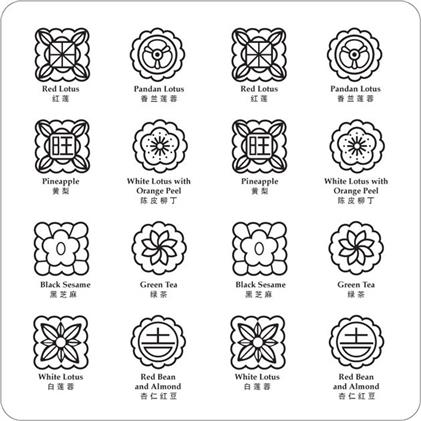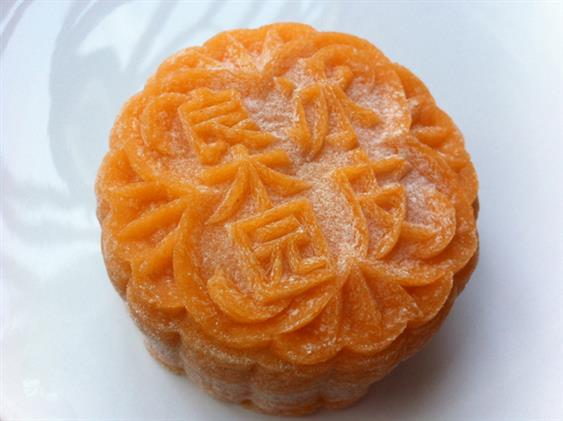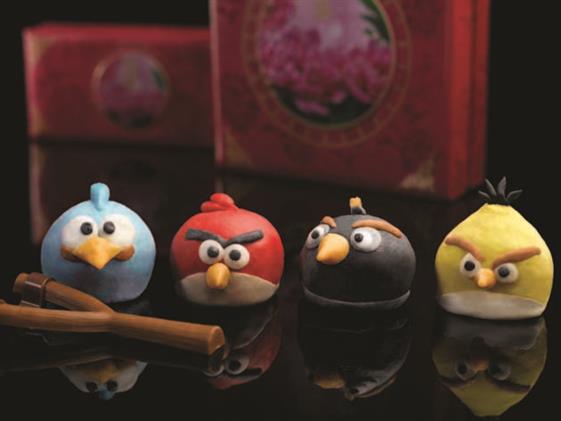
Mooncake Moulds: From Symbols To Labels
By Sheere Ng - Friday, Sep 28, 2012
The Mid-Autumn festival is back again, and hotels and restaurants are flooding the market with mooncakes that not only have an assortment of flavours but also come in a dazzling variety of packaging designs too. It’s not just the boxes they come in, but the mooncake itself — its skin a perfect canvas for creative intervention.
Tung Lok, one of the biggest mooncake manufacturers in Singapore, has gone to the extent of having a dedicated motif for every flavour it produces, each specially designed by their in-house designer.

Mr Vincent Phang, Senior Vice President of Tung Lok, explains, “Aside from the mould identifying both the flavour and ingredients of each mooncake, it also acts as an emblem of the quality of Tung Lok mooncakes.” This is a far cry from the days when patterns on mooncake skins were simply bar reliefs of symbolic blessings.
At Shi Xing county in Guangdong province, centuries-old mooncake moulds that date back to the Ming and Qing dynasty were discovered to contain imagery of flowers (representing wealth), fish (representing surplus), mandarin ducks (representing happy marriage) and lotus, as well as Kwan-yin (Goddess of Mercy).
This became a tradition that sold well. According to a report by Guangzhou Daily, Zhangtian Village in Shaoguan, China, which has a flourishing mooncake mould industry since the 1970s, continues to produce typical symbolic Chinese motifs of dragons, phoenixs, plum blossoms, orchids, chrysanthemum flowers and bamboos because mould-carvers say these have an “assured market”.
In Singapore, mooncake motifs serve a more practical purpose – to appeal to consumers.
Local mooncake producer Tai Chong Kok, which has 77 years of history in Singapore, practices a tradition of indicating the number of yolks on its mooncake designs. Impressed on the skin of its mooncakes are either the Chinese characters “Dan Huang”, which represents single yolk, or “Shuang Huang” indicating the mooncake has double yolks. The second generation owner, Mr Tham says, this allows them to easily sort out the mooncakes, and also helps customers differentiate their assorted purchases without having to cut them up.
With a more competitive market, especially now that hotels are producing their own moocakes too, such motifs have also become an expression for brand differentiation. While most do not go to Tung Lok’s extent of having a unique pattern for each flavour they offer, it is common for many to imprint their brand names as the centrepiece of the design, relegating traditional motifs to mere trimmings instead.
“This not only puts our unique stamp on the mooncake, but also assures the customer of the quality behind the name,” explains Ms Justina Loh, Marketing Communications Manager from Goodwood Park Hotel.

Some mooncake manufacturers have gone further, riding on the latest trends to redefine how their mooncakes should look. This year, at least three companies are offering “Angry Bird” mooncakes, with some even giving it the shape of the characters from this popular game.

Is there really no limit to what design mooncakes can take? What about taste you might ask?
As it turns out, snow skin mooncakes, a relatively new invention, is more delicate compared to traditional mooncakes, and the only way to introduce intricate designs on it is to fatten up the skin, according to Chef Alfred, Executive Sous Chef of Grand Hyatt Hotel. That, however, would overshadow the taste of its filling, he adds.

It seems the competition to make mooncake designs more elaborate and intricate is here to stay, and, increasingly more chefs may find themselves struggling between creating mooncakes as food and marketing tools. How many can strike the balance between the two? It will be interesting to watch — and taste!


